More durable and lighter than regular iron: features of making a stainless steel sauna stove
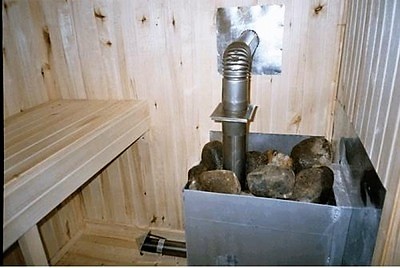
The shiny metal that stoves and chimneys are made of does not rust in natural conditionsHowever, under acid or thermal load, some chimneys fall apart, while others stand as if nothing had happened.
Cheap and thin steel of unknown origin dangerous, it can only be used in non-critical structures, such as a boiler or protective screens.
What types of stainless steel are there?
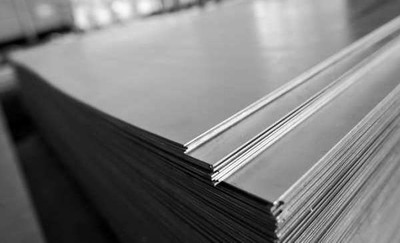
The common name "stainless steel" hides a whole range of alloysThey are conventionally divided into:
- Austenitic. This metal is not magnetic. It is ideal for sauna stoves, but rare and very expensive. It perfectly withstands all kinds of influences - chemical and temperature.
- Ferritic. Became high chromium They withstand loads well and can be used for stoves and chimneys.
Important! Steel low additive content they rust and are not suitable for stoves.
Stainless steel sauna stove more durable and lighter, than from simple carbon steel. But this is typical only for furnaces made of austenitic or high-alloy ferritic steel.
Construction of a stainless steel sauna stove
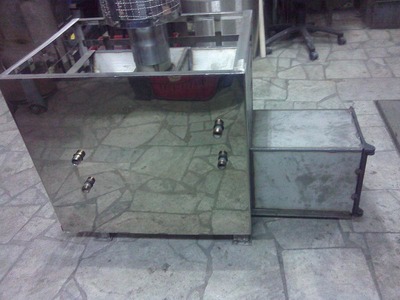
By design no different from others metal stoves. A stainless steel stove consists of the following elements:
- Fuel tank with an ash chamber. Wood burns in it, the walls get very hot.
- Secondary combustion chamber pyrolysis gases.
- To load stones - bracket. Direct radiation from the hot walls of a metal furnace dries the air and burns. Heat is transferred through heat accumulators - stones.
- Chimney. It is needed to remove combustion products. Its main characteristic is tightness.
Attention! Carbon monoxide and carbon dioxide, entering the room, cause poisoning and even death. You can't skimp on installing chimneys - choose good materials, tight connections.
- Additional devices - Uttermark channels and hot water tanks, decorative fences for stone loading.
Installation Features
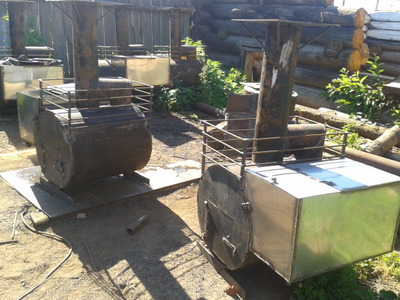
Looking at a well-made stainless steel stove, Please note the following points:
- Stainless steel has a high thermal expansion rate. When heated, it "leads" and "twists". It is leveled out the presence of stiffening ribs in heated surfaces and high-quality welded seams.
- Heat dissipation must be uniform. It is not possible to tile tightly such a stove brick or too thick a layer of stones.
- Hot stainless steel is easily deformed. Therefore, it is desirable that the stones did not press on the body stoves. This is achieved by building around false mesh housings.
A well-built stainless steel stove will serve significantly longer than usual (20-30 years)When choosing, it is worth paying attention to the manufacturer, steel grade, presence of stiffening ribs in the firebox, convex reliable welds.
How to build a sauna stove with a tank and a chimney
Stainless steel stove it's expensive. Therefore, if you wish and have the tools you can save money, having built an excellent structure with your own hands.
Material
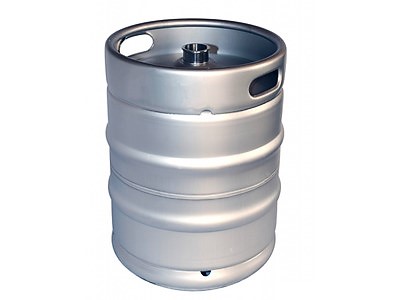
Can be used beer keg, activator washing machine body, steel sheets. When choosing a material, pay attention to:
- Type of steel. The best option would be AISI 316.
- Form of the workpiece. The following products are suitable for our purpose cylindrical forms - they have fewer welds and lower strength when heated. square It is easier to work with sheets, but it will require additional reinforcement of the structure with stiffening ribs.
- Thickness of steel. Optimal thickness 1.5—3 mm. Thinner than 1 mm use not desirable - a thin wall bends more when heated.
Tools
Working with stainless steel requires special skills and materials. You will need:
- Measuring equipment: tape measure, ruler, template.
- Welding equipment. Ideal — TIG in argon. If there is no access to such equipment, you can weld with special electrodes on stainless steel.
- Auxiliary equipment and materials. The seams are etched SE paste, when welding you will need copper heat sink plate.
- Protective equipment: glasses, welding mask, work clothes and gloves.
Work order
- Sheets of metal are welded through a heat-conducting plate two cylinders — for a firebox with a diameter 500 mm, and for the secondary chamber 250 mmThe ends are sealed.
- Cylinders are welded together. The transition from the firebox to the secondary chamber should be located away from the chimney outlet. Welded in union chimney.
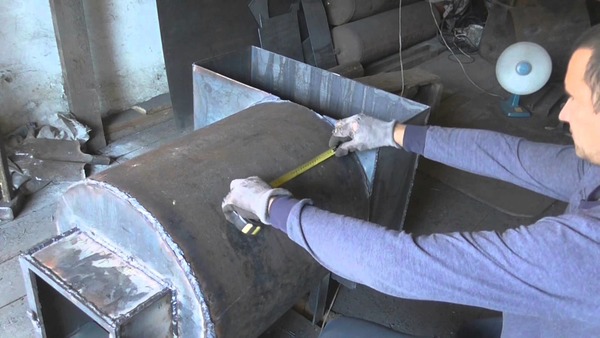
Photo 1. Before welding the mesh for stones to the sauna stove, you should take measurements.
- It is welded mesh basket for loading with stones. Loading thickness — 10 cmThe stones are laid so that the iron is not visible.
- It is being manufactured chimney. On first knee the chimney is welded tank for water. Thickness of water jacket should not exceed 30 cm, the tank copes well with cooling the exhaust gases. The tank must be equipped with a steam outlet fitting, otherwise the boiling water will burst the wall. Second knee The chimney has a heat-insulated box for passage through the ceiling.
A properly made stove should be hermetically sealed. Welded seams are better boil several times.
Possible complications
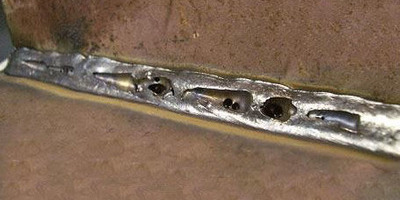
Difficulties in building a stove:
- It's difficult to maintain the diameter cylindrical products. To make the task easier a pipe template is used, the seam is grabbed and welded using a heat-dissipating plate.
- In the firebox, the seam is located at the bottom, in the ash pan.
- All seams go through twice - thread fast and melt a convex roller on top. Allow overheating metal it is forbidden.
Useful video
The video shows how to make a sauna stove from 4 mm thick stainless steel sheets.
Operating rules
Use has some features:
- Stainless steel stove should be larger than usual, so as not to work in the “maximum” mode.
- To drown bake it takes longer, prolonged heating in forced mode leads to deformation of the metal.
- The stone load should not be too thick., then heat dissipation from the walls will be worse.
- Important monitor the integrity stoves, before each firebox the seams are checked — this is where deformations most often occur.
Stainless steel stove significantly more durable welded from simple iron.








